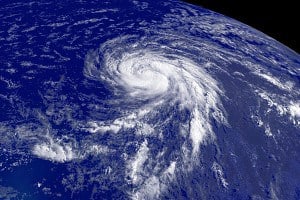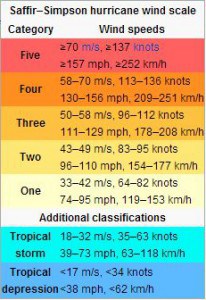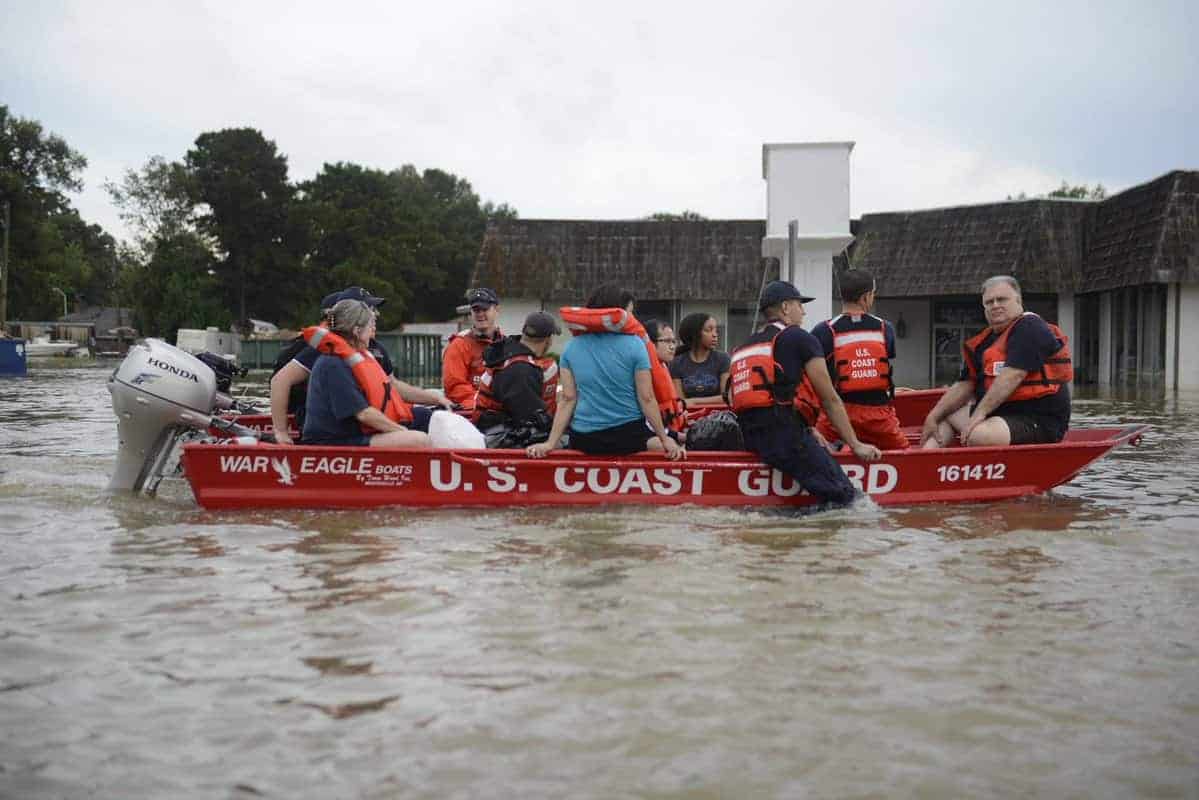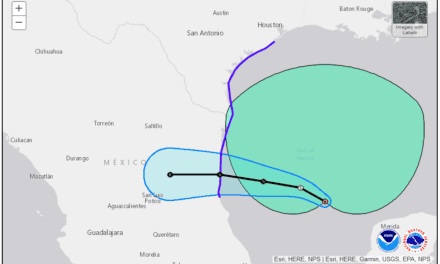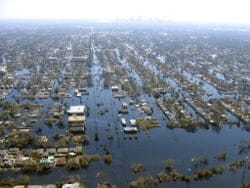The National Hurricane Center reminds us that the hurricane season is just a few months away, and the time to prepare for that season is now. Although the direct force of a hurricane directly affects the coastal region where it comes ashore, effects can reach far inland. Hurricane Sandy hit New Jersey and traveled over the Appalachians to affect Pennsylvania, Ohio, Michigan, Wisconsin and Illinois. Gale warnings were issued for Lake Michigan where waves in excess of 21 feet, with some some reaching 33 feet in height, were recorded.
Good Preparations for a hurricane begin with understanding the dangers and then forming a plan and putting that plan into action.
Atlantic Season Begins June 1
The official season begins on June 1 and runs through November 30. Long range forecasts can predict the intensity of the season, but not individual storms. Such forecasts are useful to gauge what to expect, but can’t offer insight into where storms will hit or how often. They are often publicized because they are newsworthy and help governmental agencies prepare for the worst.
Examining the records for Atlantic Basin Tropical Cyclones reveals that storms form during every month of the year, not just during the storm season.
Tropical Storm Risk, an organization headed by Prof. Mark Saunders and Dr. Adam Lea of the University of London Department of Climate and Space Physics, issued their long-range prediction for the 2014 season in December. This season could see as many as five intense hurricanes (category 3-5), nine hurricanes (category 1-2), and 18 tropical storms.
TSR will update their assessment in April.
Know the Dangers
High winds make for good headlines and are widely publicized, but they are not the most devastating effects of tropical storms. The winds normally begin subsiding when the storm crosses over land as the storm loses its primary energy source, which is warm ocean water. When a storm becomes extra-tropical however, it receives energy from other sources, as was the case with Hurricane Sandy which wreaked havoc all the way into the Western Great Lakes.
Storm surge is a double mound of water. A large mound is formed by the cyclonic winds pushing water ahead of the wind and forms just behind the eye of the storm. A second surge forms in the eye of the storm where barometric pressure is the lowest. The surrounding area has a higher pressure, which pushes down on the water and forces it up into a mound in the eye of the storm. Storm surges can reach 25 to 30 feet and inundate coastal bays, lakes, rivers, and estuaries.
Records for the past 30 years show that inland flooding causes more deaths than high winds and storm surge combined. Torrential rains easily measured in feet—not inches—inundate the land away from the coast and cause widespread flooding. Hurricane Claudette dropped nearly four feet of water on some areas of Texas after it moved inland.
Widespread power outages last for days and weeks after a hurricane. The extreme winds knock trees down onto power distribution lines and tornadoes spawned by the storm cause even more damage to transmission lines and substations. Three weeks after Hurricane Sandy, crews were still working to restore power to West Milford, New Jersey customers. Some customers waited more than five weeks.
Make Your Hurricane Preparedness Plan Now
Now is the time to take action and get ready for hurricane season. Formulate an evacuation plan if you live on or near the coast. Know the evacuation routes and put together an evacuation kit that includes non-perishable food, clothing, water, and personal items to take with you.
Understand the dangers of tropical cyclones as they pertain to where you live and how they will affect you, so that you can be prepared ahead of time. Stock non-perishable food supplies and a minimum of 1 gallon of water per person, per day, for at least one week. Provide for an alternative source of electrical power. Standby generators are best; portables offer a less-expensive option, but fuel for portables may be scarce during a widespread power outage.
Remember that Hurricane Preparedness Week begins May 25th. The time to begin preparedness is now, before the season begins.


